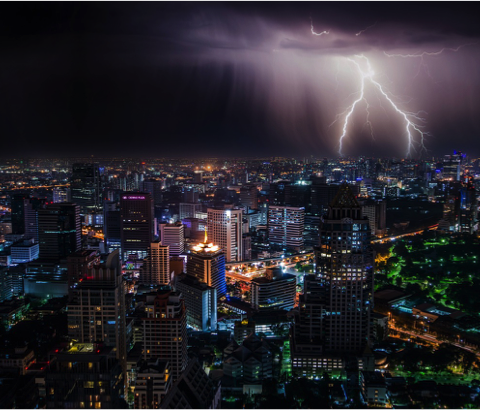 When it comes to protecting your facility, equipment and workforce, it’s imperative to have a sustainable lightning protection system in place. In the U.S. alone, the National Lightning Safety Institute reports that lightning strikes cause more than 26,000 fires and nearly $6 billion in property damage annually.
When it comes to protecting your facility, equipment and workforce, it’s imperative to have a sustainable lightning protection system in place. In the U.S. alone, the National Lightning Safety Institute reports that lightning strikes cause more than 26,000 fires and nearly $6 billion in property damage annually.
With the proper protection system in place, you can help safeguard your property from the catastrophic effects of lightning, operational downtime and lost business opportunities. But don’t settle for just any lightning protection system. Rather, look for one that is integrated to obtain full facility protection.
Continue reading to learn what an integrated lightning protection system is, and why it’s critical.
Gain Total Facility Protection from Lightning Strikes
Unexpected lightning strikes can cause serious damage to not only your facility, but also can lead to:
- Risk of injury or death
- Damage or destruction of critical equipment
- Data loss due to equipment downtime
- Operational downtime
- Lost revenue
As businesses grow increasingly dependent on critical technologies like servers and sensitive equipment, it’s more important than ever to protect facilities from lightning damage. That’s why facilities need a holistic, integrated lightning protection system.
An integrated lightning protection system helps minimizes the risk of damage to facilities, as components like grounding, equipotential bonding and surge protection all work together, rather than independently. As these integrated components work together, facilities gain maximum protection to save budget, reduce damage and protect the workforce.
Follow These Steps for a Fully Integrated Lightning Protection System
To fully integrate a lightning protection system for maximum results, nVent created the ERICO Six Point Plan of Protection. This six-step protection plan minimizes the risk of damage to facilities through:
- Direct strike protection
- Grounding and bonding
- Surge and over-voltage transient protection
The plan involves the following six steps to minimize the potential threats of a lightning strike:
- Capture the lightning strike to a known attachment point using a purpose-designed air terminal system.
- Convey the energy to the ground through a purpose-designed downconductor.
- Dissipate energy into a low impedance grounding system.
- Bond all ground points together to eliminate ground loops and create an equipotential plane.
- Protect incoming AC power feeders from surges and transients on incoming power lines to prevent damage and costly downtime.
- Protect low voltage data / telecommunications circuits from surges and transients on incoming telecommunications and signal lines.
Following the steps above will help integrate your lightning protection system, including components like grounding, equipotential bonding and surge protection. Learn more about the ERICO Six Point Plan of Protection here.
Image credit: Pixabay, CC0 Public Domain


